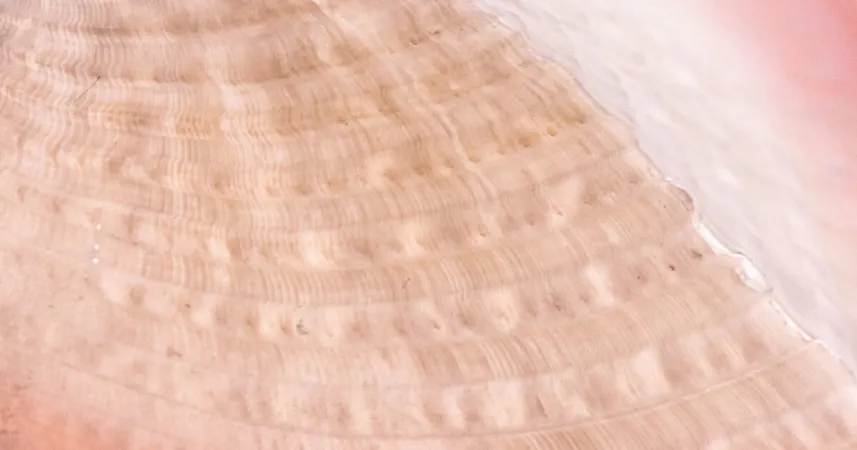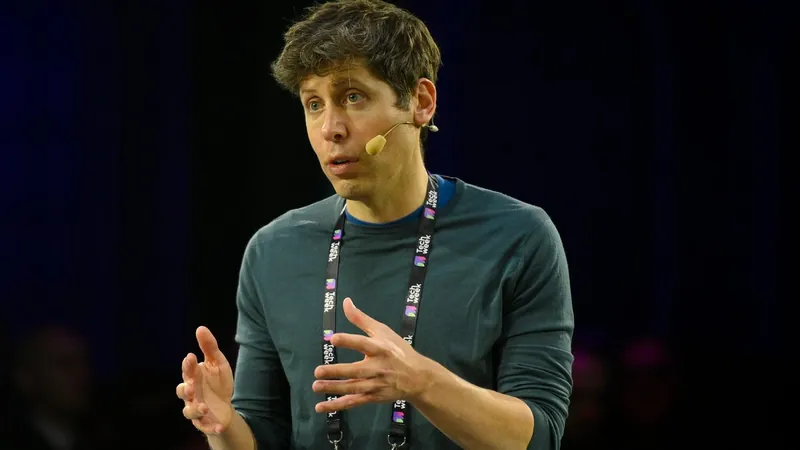
How Mollusc Shells Hold Secrets to Better Fiber Optic Cables and Coral Survival
2024-11-23
Author: Rajesh
Introduction
In the vibrant undersea world, healthy corals shine with colorful hues, living in a symbiotic relationship with algae. The corals provide a safe haven for these microscopic partners, while the algae, through photosynthesis, supply essential nutrients for the corals. However, rising sea temperatures lead to coral bleaching—a phenomenon where corals expel their algae, leaving them white or even black and lifeless. “When corals bleach, the biodiversity around them diminishes significantly,” warns Dakota McCoy, a biologist at the University of Chicago.
Resilience of Heart Cockles
Interestingly, some marine life seems resilient to these temperature shifts. McCoy discovered that heart cockles, a clam-like mollusc aptly named for the shape of its shell, appear to withstand stress better than corals despite hosting the same algae. This prompted McCoy and her research team to investigate the underlying reasons for the heart cockle's resilience. They revealed groundbreaking findings in their study published in *Nature Communications*: the unique structure of heart cockle shells functions like natural fiber optic cables, effectively channeling light to the algae.
The Science of Light Transmission
To uncover the shell's secret, researchers illuminated heart cockles with LED lights and examined how light passed through their shells. They noticed fascinating patterns—tiny triangular structures, striking zebra stripes, and even stained glass-like windows allowed different wavelengths to penetrate the shell. What sets heart cockles apart is their ability to transmit over twice as much sunlight to their algae while filtering out harmful UV rays.
Moreover, some heart cockles possess mineral lenses beneath their shell structures that concentrate light, ensuring that algal tenants receive optimal illumination for photosynthesis. This phenomenon minimizes the risk of light intensity burning the algae, as noted by Stanford professor Jennifer Dionne, a collaborator in the study.
A Natural Marvel of Engineering
In examining the shells’ composition, the researchers discovered that the calcium carbonate crystals were aligned in long, thin fibers—a stark contrast to the opaque shells of corals. “It’s like a finely-tuned system designed by evolution to maximize light capture,” McCoy remarked. This sophisticated architecture of the heart cockle demonstrates nature's ability to solve engineering challenges that even humans strive to overcome.
“Nature has perfected a method to guide light to benefit these organisms, potentially inspiring advancements in technology such as tiny cameras and improved fiber optic systems,” Dionne said. The implications of these findings extend beyond coral resilience; they could revolutionize how we engineer materials in the future by learning from biological systems.
A Path Toward Coral Conservation
These results may help explain why heart cockles resist bleaching more effectively than corals. While both species face the same environmental challenges, heart cockles leverage their superior light management strategies to reduce stress from harmful UV exposure. McCoy suggests this insight could be pivotal for future coral conservation efforts: “If we understand how heart cockles handle light for their algae, we could engineer more resilient algae or coral strains.”
In McCoy's view, heart cockles illustrate the incredible potential advantages of biological evolution, serving as a model for sustainability and efficiency in utilizing solar energy. “It’s a stunning testament to how living organisms can manipulate natural resources—something we can learn from,” she asserts.
As scientists continue to unravel the secrets of these remarkable molluscs, we might find innovative ways to protect our coral reefs—a vital ecosystem facing an uncertain future. The heart cockle’s unique adaptation offers hope not just for its survival but potentially provides the key to safeguarding the health of corals and marine biodiversity worldwide.


 Brasil (PT)
Brasil (PT)
 Canada (EN)
Canada (EN)
 Chile (ES)
Chile (ES)
 España (ES)
España (ES)
 France (FR)
France (FR)
 Hong Kong (EN)
Hong Kong (EN)
 Italia (IT)
Italia (IT)
 日本 (JA)
日本 (JA)
 Magyarország (HU)
Magyarország (HU)
 Norge (NO)
Norge (NO)
 Polska (PL)
Polska (PL)
 Schweiz (DE)
Schweiz (DE)
 Singapore (EN)
Singapore (EN)
 Sverige (SV)
Sverige (SV)
 Suomi (FI)
Suomi (FI)
 Türkiye (TR)
Türkiye (TR)